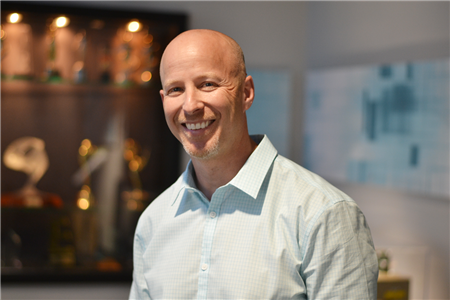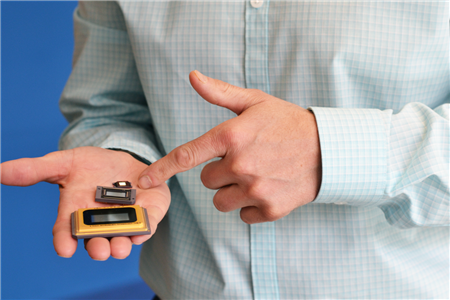-
Making Our Digital Imaging Chips Is No Ordinary Process
Making Our Digital Imaging Chips Is No Ordinary Process
Jeff Marsh considers himself a master juggler. He’s the DLP® Product Engineering Manager who oversees every step of our DLP chip making process.

“I definitely deal with many unique challenges simultaneously,” Jeff said. “But after 20 years at TI, I’ve gotten pretty good at it.”
Pretty good is perhaps an understatement.
Since the first DLP chip was invented by Dr. Larry Hornbeck in 1987, new versions of our DLP semiconductor chips have enabled a wide array of applications. The invention of the digital micromirror device (DMD) itself revolutionized the film industry, earning Dr. Hornbeck an Academy Award * for the invention of the DMD as used in TI DLP Cinema® projection.
Our DLP technology also enables today’s high-speed industrial 3D printers, makes handheld near-infrared (NIR) spectrometers possible, drives head-up display (HUD) solutions for the automotive industry, and opens up small form factor uses such as head mounted or wearable displays.
At the heart of all of these product applications is our DMD, tiny chips bristling with millions of microscopic mirrors that control and reflect light.
To Chip, or Not to Chip?
Creating a new DLP chip from scratch is a constantly evolving process of refinement and innovation. It always begins with the same question: What is the business need?
“As equipment makers are interested in incorporating DLP chips in everything from ultra-mobile displays to high resolution ultraviolet 3D printers, it’s important we understand the requirements,” Jeff said. “We have to understand what the product needs to be able to do and what features our chip designers and engineers must incorporate in order to meet these requirements.”
Like a complex puzzle, considerations such as size, cost and resolution are just a few features that must align before a viable chip can be designed and ultimately produced in quantity.

The “Secret Sauce” of Chip Making
Perhaps what makes our DLP chips so special and uniquely TI is how they’re made. As Marsh readily attests, it’s a unique feat of semiconductor engineering.
“I often get asked ‘How in the world do you put all those tiny mirrors on the device?’” he said. “Some people might think we assemble them mechanically with tweezers or by using a robot under a microscope. Not even close.”
All DLP chips start with a standard complementary metal-oxide semiconductor (CMOS) wafer. These wafers form the memory cell array that will ultimately tell the micromirrors how and when to tilt.
Then the magic happens.
“We build a structure on top of the memory cell, but we do it in a way where we use a series of metal depositions, etches and photolithography to build a 3D array of mirrors,” Jeff said. “So while we’re using standard semiconductor equipment and processing, we’re doing it in a way that is beyond conventional use. It’s what sets us apart, really.”
The Chip Making Journey Continues
After a long stretch in development, design and testing, what’s next? Manufacturing. But it doesn’t end there. Jeff said he and his team remain constantly vigilant to help customers with any challenges or questions they may have with our new DLP chips.
“We’re always monitoring performance during assembly, and monitoring yields to ensure we’re delivering what our customers need,” Jeff said.
And whether it’s lower power, higher brightness, increased resolution or a smaller footprint, the process of driving innovation to create newer DLP chips to meet the new demands of our customers looking for new potential applications never ends.